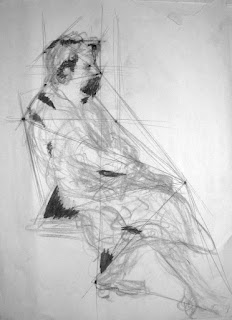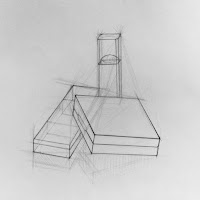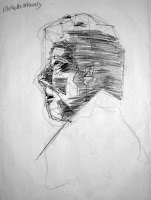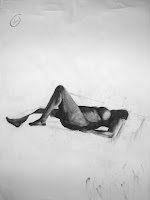Let's train our eye for a moment to see intercross in the selected examples on this page. Strictly speaking it is void of value. On it's own it is just straight-line inspection. Sometimes it is very obvious to see. At other times, a student has erased some of these early measurements back for a cleaner looking drawing. But in each instance on this page you will see it like an operating system running in the background of each piece. It's how each piece started. In the above examples it's easy enough to notice. The angles between disparate elements of the figure are being compared. Very little value has come into the drawing yet.
Notice the lightly drawn angles that compare the farthest points of the objects being drawn. Notice how the legs of the stool are only half drawn. What came first, and still mostly evident here, is the intercross.
Student examples of simple still life objects. In the quick in-class exercise of rotating objects (the open box and chair), intercross was brought in with vine charcoal and smudged away as the drawing progressed.
Here other elements of drawing begin to play their role. Value shapes creeps in. Intercross is still evident but it is becoming somewhat less obvious as it is covered up with light and dark.
Further polish and rendering leaves the intercross still evident, but one must know what they are looking for at this point to see it. Often students will knock the initial intercross lines back at this point as they may begin to detract from the finished piece (but this is completely personal preference and other students may enjoy leaving them in).


















No comments
Post a Comment